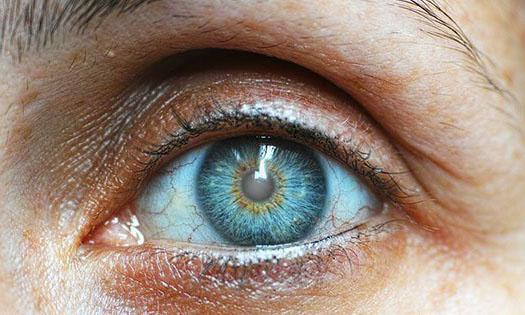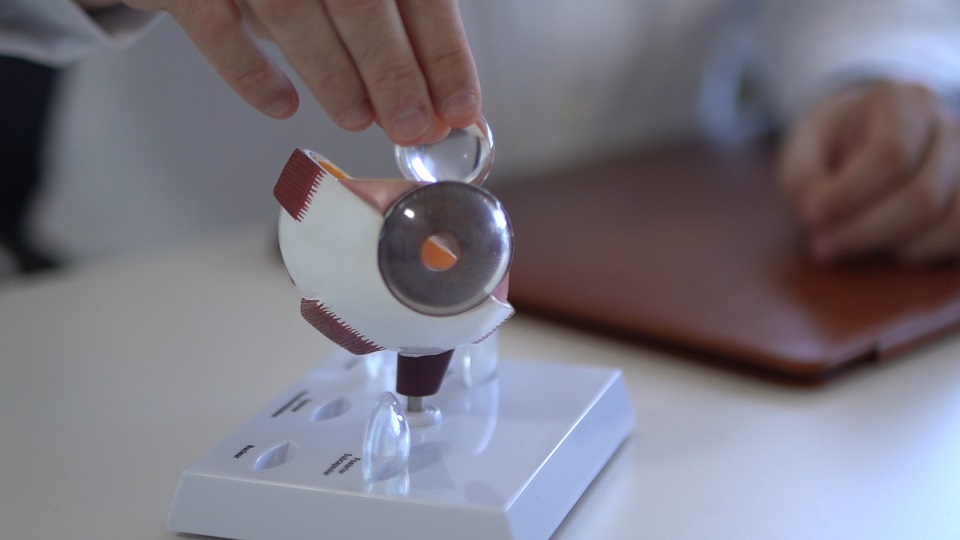Cataracts / What are cataracts?
What are cataracts?
Cataracts are when the crystalline lens, (one of the two natural lenses in our eyes) becomes totally or partially opaque, progressively limiting a patient’s vision. Cataracts are normally associated with aging, but they can also be congenital, caused by trauma or formed more quickly due to certain diseases, and can also appear as a side effect of certain medications.
The loss of transparency caused by cataracts generally happens slowly and progressively, so it may go unnoticed for quite a while and a patient may become accustomed to a level of visual acuity that is actually less than ideal. They can only be treated with surgery.

In Spain, 500.000 cataract operations are carried out a year, making it one of the most demanded surgeries in the field of ophthalmology. The Oftalvist Group performs almost 20.000 cataract surgeries every year in its more than 35 clinics.
How do I know if I have cataracts?
Cataracts lead to progressive loss of vision for both long and short distances, making vision blurry and causing halos to appear around lights, with patients becoming increasingly uncomfortable when exposed to bright lights.

Types of cataracts
Subcapsular cataracts
Subcapsular cataracts occur at the back of the crystalline lens. Patients with the highest risk of suffering from this type of cataract are those with diabetes or those who take high doses of steroids.
Nuclear cataracts
Nuclear cataracts are formed in the central area of the crystalline lens. This type of cataract is mainly associated with aging.
Cortical cataracts
This type of cataract is formed in the lens cortex. It occurs when small white opaque areas appear around the outer edge of the lens and begin to move inwards radially towards the centre.
Metabolic cataracts
Metabolic cataracts occur as a secondary effect of metabolic illnesses that produce unique substances in the lens, causing it to become opaque more quickly.
Congenital cataracts
This is the name for cataracts that are formed from birth, and they may be either unilateral or bilateral. They are generally hereditary and cannot be prevented. It is important to carry out tests to detect any kind of congenital ophthalmologic condition early from birth.
Traumatic cataracts
This type of cataract is associated with some form of eye injury, impact or contusion that may also damage other structures of the eye to a greater or lesser degree.
Toxic cataracts
This may form due to a patient abusing medication or any other toxic substance, such as ergot, corticosteroids or paradichlorobenzene.
Radiation cataracts
These can occur as a result of long-term exposure to an ultraviolet, infrared or ionising radiation explosion.
Secondary cataracts
This kind of cataract can form several months, or even years, after phacoemulsification surgery is performed on a patient to treat an initial cataract, causing the posterior lens capsule to turn opaque and thus reduce the patient’s near and distance vision. This is what we call a secondary cataract. It is caused by epithelial cells migrating from the lens or anterior capsule towards the posterior capsule.
Treatment of cataracts
The only way to eliminate cataracts and restore vision is through surgical treatment. Cataract surgery is today capable of returning vision back to normal, or even making it better than it has been for a long time:
→ It is performed with local anaesthetic, either with anaesthetic eye drops or with an injection in the eyelid.
→ Cataract surgery is an outpatient procedure that does not require a hospital stay.
→ The use of modern laser technology for performing laser cataract surgery makes the operation more precise and comfortable for the patient. Oftalvist was a pioneer in incorporating laser technology in all its centers in our country in 2012.
→ There are different types of intraocular lenses that can be implanted after removing the opacified lens: either to correct only distance vision (monofocal intraocular lens), distance vision and near (multifocal intraocular lens) and even high astigmatism (toric intraocular lens).
→ The more mature the cataract is, the more difficult surgery is and the greater the risk of complications. For this reason, in general, the most appropriate time for cataract surgery would be when the patient begins to notice difficulties in their daily life.
Cataracts and Presbyopia
It could be considered that presbyopia is the initial phase of the cataract. From the age of 40-45, as a consequence of the aging of the transparent lens that we have inside the eye, it loses its accommodation capacity or ability to focus on objects at different distances, therefore, it loses flexibility and this leads to the loss of near vision sharpness.
This loss of vision progresses and continues its evolution over the years and it is from the age of 65 when the opacification of the crystalline lens is more evident. Therefore, tired eyesight is the visual condition prior to the formation of cataracts. In this way, if a patient underwent a presbyopia operation, the incipient development of cataracts would be corrected simultaneously.
Frequently asked questions
→ Can cataracts come back after surgery?
No, although the capsule left in the surgery to hold the lens may become opaque over time and create the sensation of blurry vision that is similar to that experienced with cataracts, but this is NOT actually a cataract. This issue can be easily resolved with a laser, without the need to return to the operating room, and the patient will heal and regain normal visual acuity immediately. This issue cannot come back a second time.
→ Can cataracts be operated on with a laser?
→ What are the preoperative tests for cataract surgery?
→ Why can’t you perform cataract surgery on both eyes at the same time?
→ When will I be able to go back to normal life after cataract surgery?
→ How many days of rest will I need?
→ What kind of care will I need after cataract surgery?
→ Can I travel by plane after cataract surgery?
→ Is cataract surgery painful?
→ How long does a lens implanted in the eye last after cataract surgery?
→ What is the most suitable artificial lens for replacing a natural lens removed during cataract surgery?




